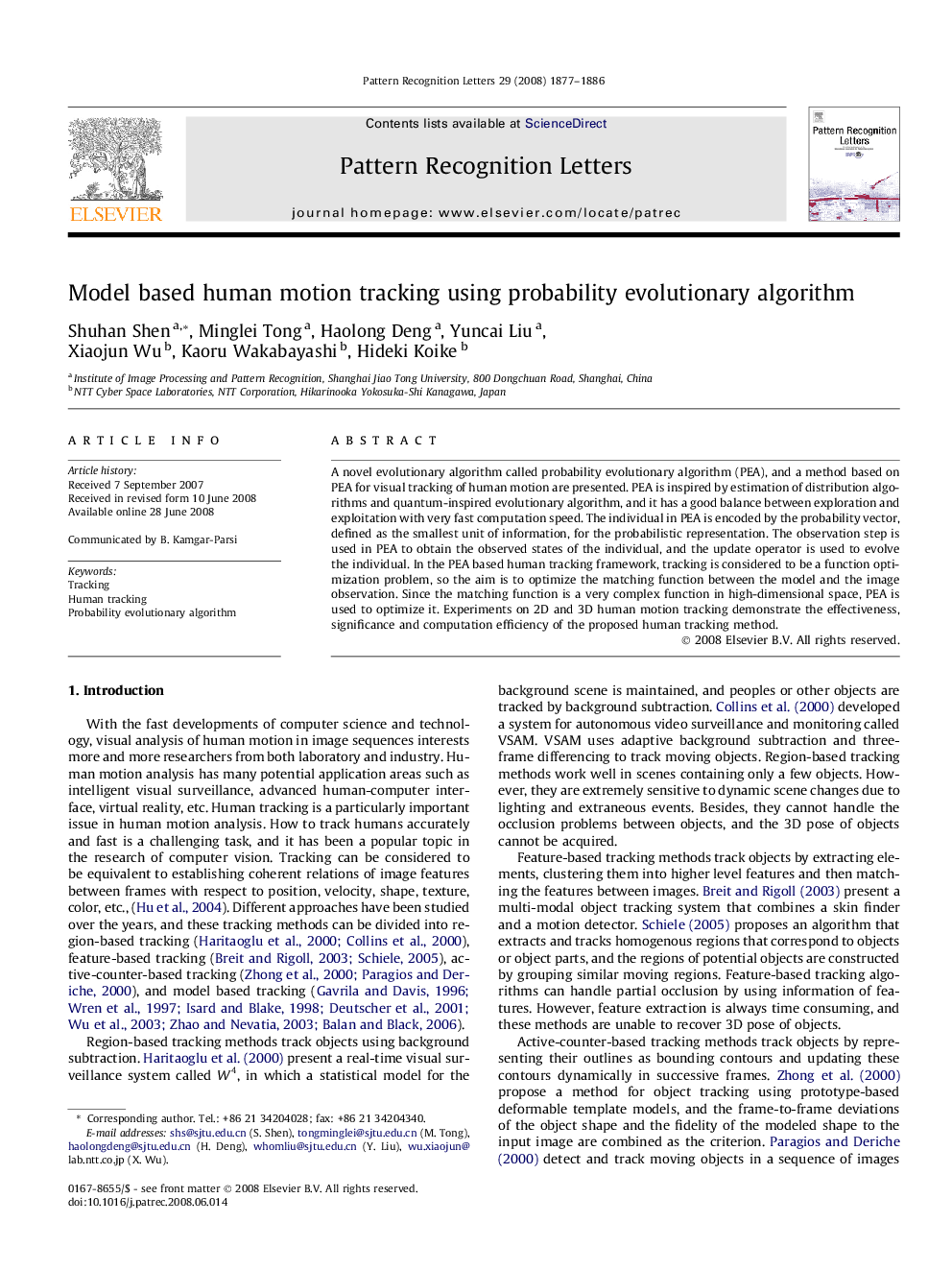| Article ID | Journal | Published Year | Pages | File Type |
|---|---|---|---|---|
| 536647 | Pattern Recognition Letters | 2008 | 10 Pages |
A novel evolutionary algorithm called probability evolutionary algorithm (PEA), and a method based on PEA for visual tracking of human motion are presented. PEA is inspired by estimation of distribution algorithms and quantum-inspired evolutionary algorithm, and it has a good balance between exploration and exploitation with very fast computation speed. The individual in PEA is encoded by the probability vector, defined as the smallest unit of information, for the probabilistic representation. The observation step is used in PEA to obtain the observed states of the individual, and the update operator is used to evolve the individual. In the PEA based human tracking framework, tracking is considered to be a function optimization problem, so the aim is to optimize the matching function between the model and the image observation. Since the matching function is a very complex function in high-dimensional space, PEA is used to optimize it. Experiments on 2D and 3D human motion tracking demonstrate the effectiveness, significance and computation efficiency of the proposed human tracking method.
